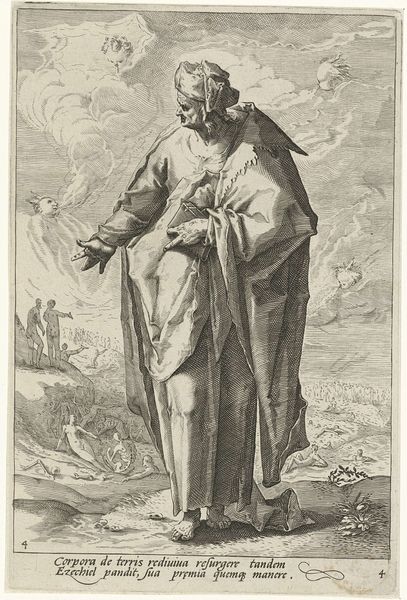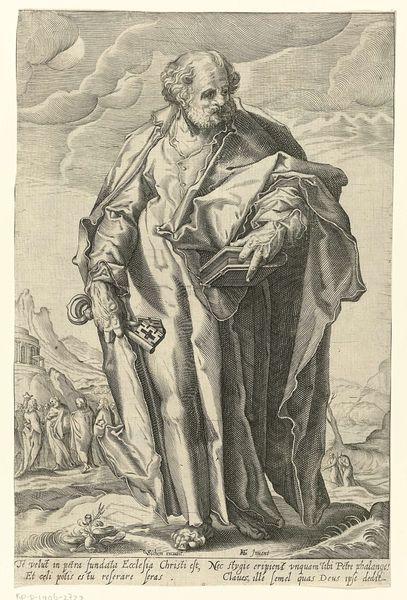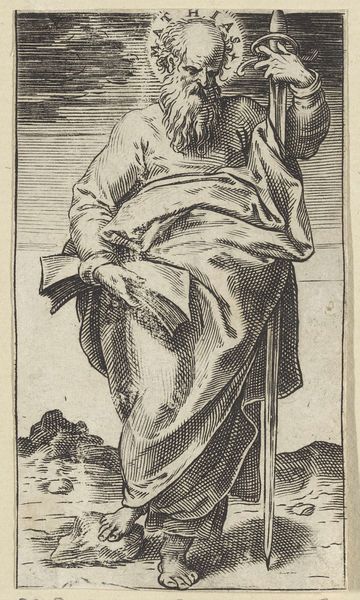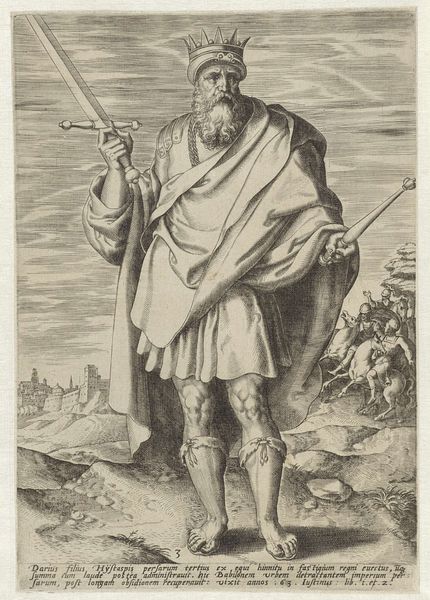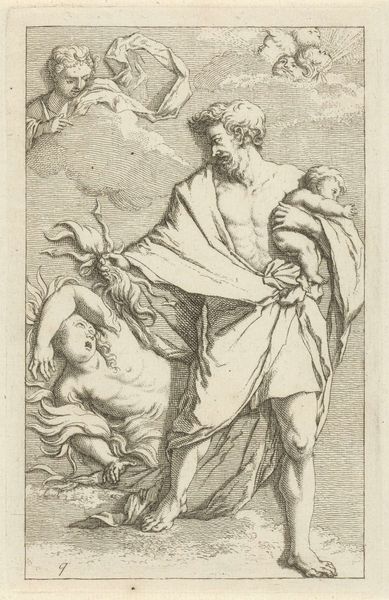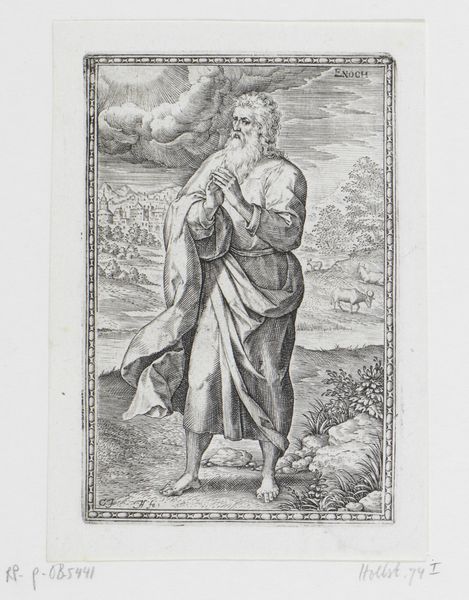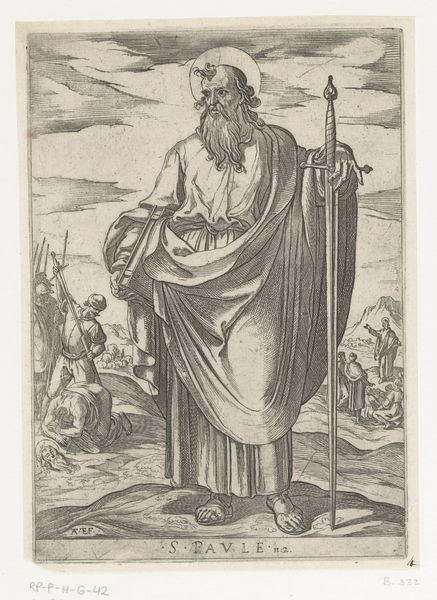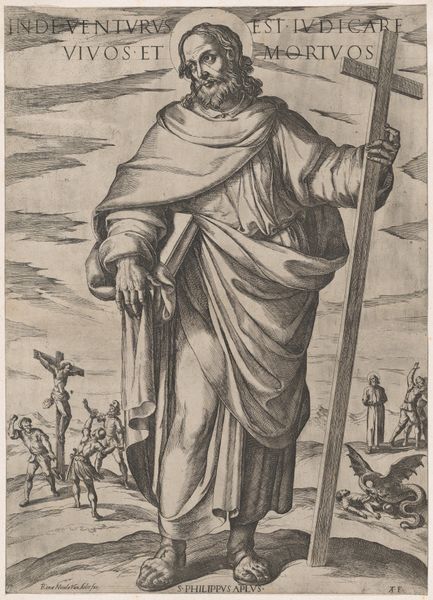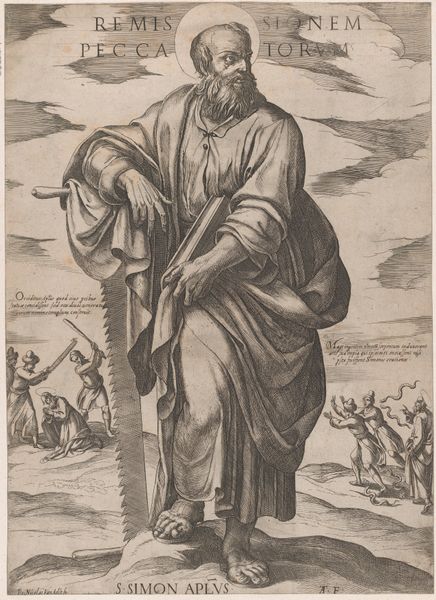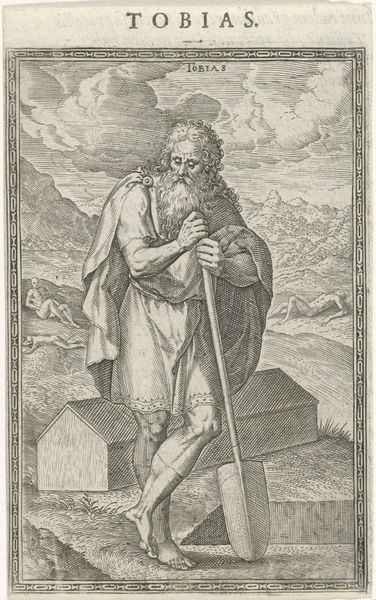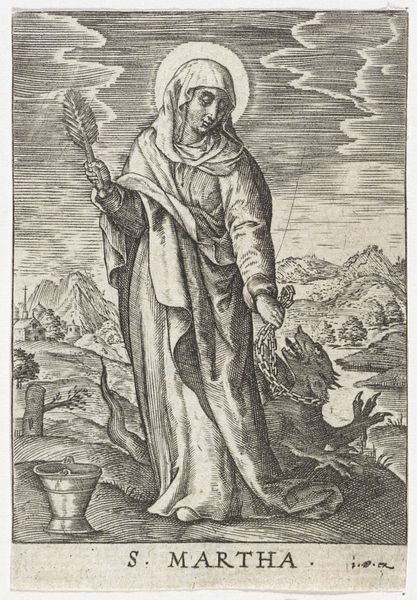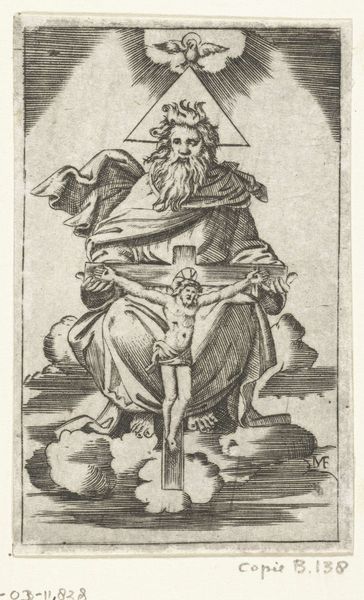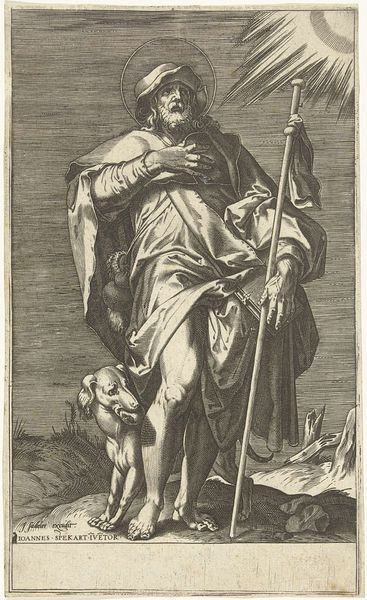
drawing, print, ink, engraving
#
portrait
#
drawing
# print
#
mannerism
#
ink
#
engraving
Dimensions: width 73 mm, height 112 mm
Copyright: Rijks Museum: Open Domain
Curator: Looking at this somber, small-scale print, “Profeet Samuel,” attributed to Abraham de Bruyn between 1550 and 1587, currently residing here at the Rijksmuseum, what’s your initial take? Editor: A man burdened with the weight of his visions, I'd say. His face is etched with a profound seriousness, perhaps foreknowledge of some heavy consequence. The textures created in the print seem almost overwhelming, lending him a certain mass and groundedness despite being rendered in delicate lines. Curator: Absolutely. Let’s delve into the mechanics of its creation. As an engraving, it necessitated meticulous labor. Imagine the precision needed to carve those fine lines into a metal plate, layer upon layer. Notice how de Bruyn's method creates a fabric of strokes to create depth. It makes you think about craft and the engraver's workshop as a locus of intellectual and skilled work. Editor: It's interesting you highlight the technique, because that craft serves the communication of deeply resonant cultural symbols. Consider Samuel himself – a pivotal figure. His presentation suggests authority, both spiritual and earthly. What draws me are his specific attributes: staff in hand, an open palm that may welcome, may cast off, it all speaks to someone capable of both guidance and judgement. His clothing evokes ancient precedence as well, the long cloak and head covering reminding of a timeless holy tradition. Curator: Certainly, the biblical narrative imbues the material culture of the work with meaning. The clothing isn't simply draped; its folds demonstrate value but also labor—washing, sewing, mending—of cloth in the pre-industrial age, a tangible history we often forget. The ink itself, the paper on which the engraving sits - how were they traded? What were the economics of religious prints? These prints speak to an extensive network. Editor: I suppose that is the tangible manifestation of the spiritual connections being visualized. Through these familiar forms – the robes, the staff – it roots something deeply metaphysical into something tactile for viewers through centuries. It ensures Samuel remains legible, both an artistic achievement and, also a cultural one, because his image stays recognizable across very different contexts of interpretation. Curator: That staying power rests, though, on distribution, reuse, the actual survival of these sometimes fragile things over centuries of handling. That’s its own complex story about value! Editor: Very true, so our layered exploration—weaving iconography with an awareness of material construction—underscores the artwork’s enduring complexity. Curator: Yes, perhaps more enduring than those inks might initially suggest to the cursory observer.
Comments
No comments
Be the first to comment and join the conversation on the ultimate creative platform.
